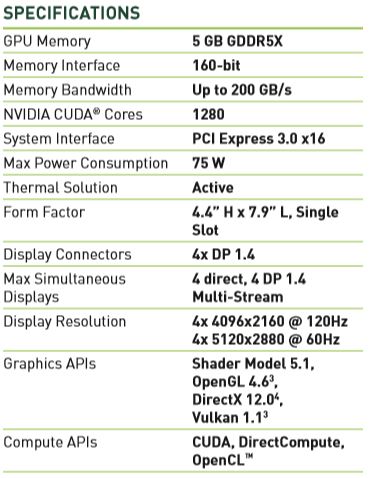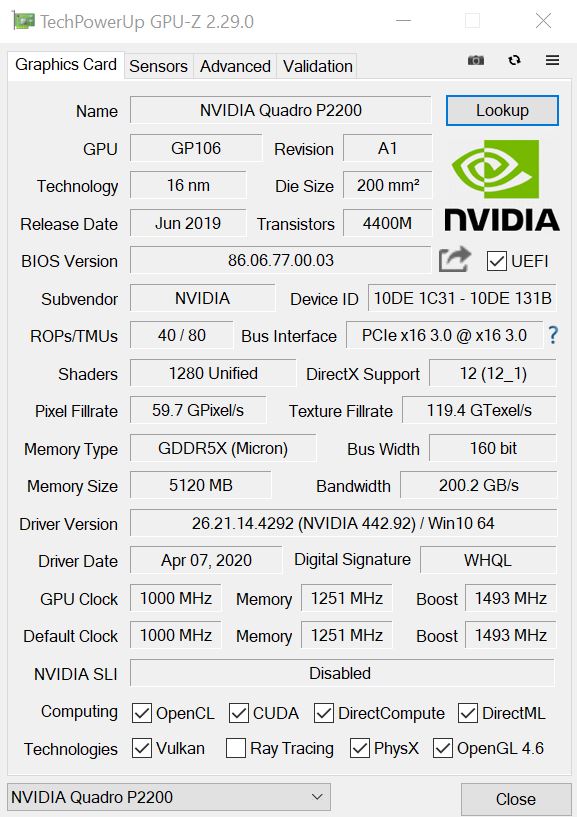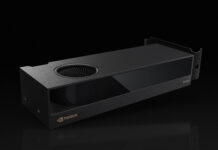NVIDIA Quadro P2200 Specifications
Here are the key specifications for the Quadro P2200:

With a Max Power Consumption of 75 watts, the Quadro P2200 can be placed in dense systems without the worry of over-heating. It can also be used in locations where low-noise is important.
One can tell that a key focus for the design is low power. In many ways, this GP106 GPU design is analogous to GeForce GTX 1060 6GB cards that prioritize display outputs and make concessions to hit power envelopes.
This is still a Pascal-era GPU. That means it is not necessarily as updated as something we would find in an NVIDIA Tesla T4 or NVIDIA Quadro RTX 5000. At the same time, for display tasks such as running multiple 4K monitors for the workstations of traders, it is a very capable platform.
Test Setup
Here is our test configuration:
Motherboard: ASUS ROG Zenith II Extreme Motherboard
CPU: AMD Threadripper 3960X (24 cores / 48 Threads)
GPU: NVIDIA Quadro P2200
Cooling: NZXT Kraken X62
RAM: 4x Corsair Dominator Platinum RGB 3600MHz 16GB (64GB Total)
SSD: Sabrent Rocket 4.0 NVMe PCIe Gen4 x4 M.2 SSD
PSU: EVGA Supernova 1600 T2
OS: Windows 10 Pro
Here is the obligatory GPU-Z shot of the NVIDIA Quadro P2200:

GPU-Z shows the primary stats of our testing the Quadro P2200. The GPU clocks in at 1,000 MHz and can boost up to 1,493 MHz. Pixel Fillrates run at 59.7 GPixels/s, and Texture Fillrate comes in at 119.4 GTexel/s, while memory runs at 1,251 MHz.
You are going to see “Ray Tracing” unchecked here. That is a feature that NVIDIA introduced with the Turing generation and will continue to implement in future generations. Still, the purpose of the Quadro P2200 is not to be a great gaming GPU. Instead, it is designed to provide a solid GPU experience in a low power envelope.
Let us move on and start our testing with compute-related benchmarks.




Wouldn’t a better test have been to include the Quadro P2000, which this seems to be an iteration of ?
Evan – we did not have a Quadro P2000 and frankly, I did not want to go to older parts.
One important use case of these 75W cards is transcoding media from one format to another. It is the cheapest Nvidia card that can transcode media without artificial limitation to two streams.
I have both P2000 and P2200… the difference in performance is ~5-10% depending on benchmark.
But it’s a moot point… since the P2000 and P2200 cost the same and have the exact same feature set and power/thermal budget everyone should just buy the P2200.
Many of the customers are just using it for video transcoding anyway.
The P2000 is also no longer coming off the production line.